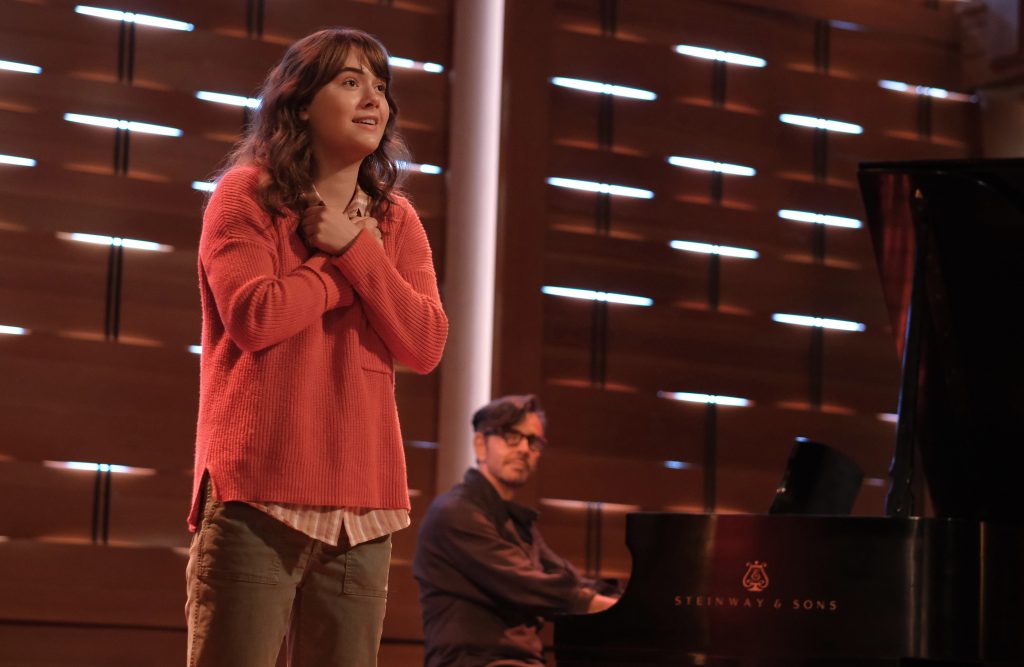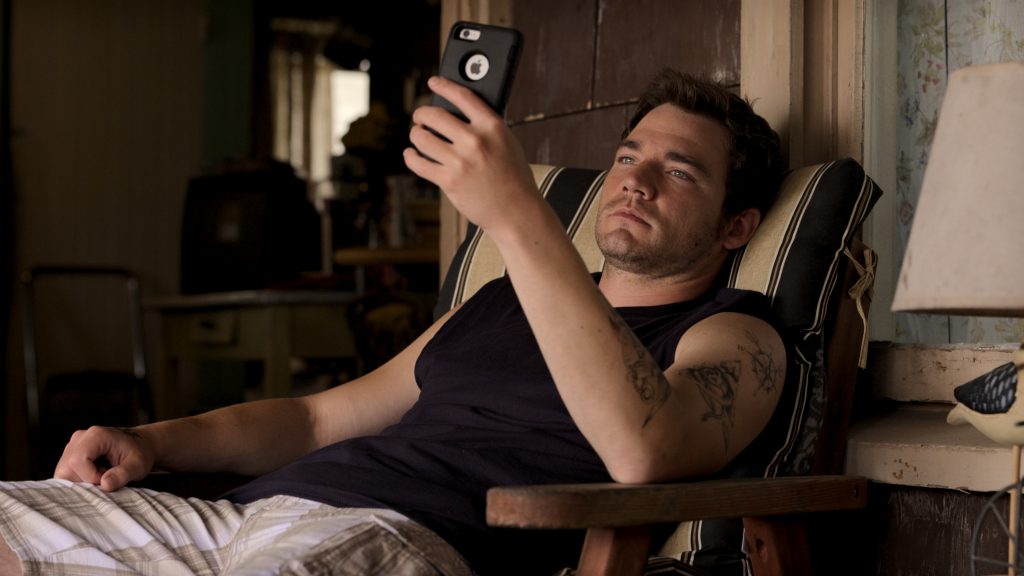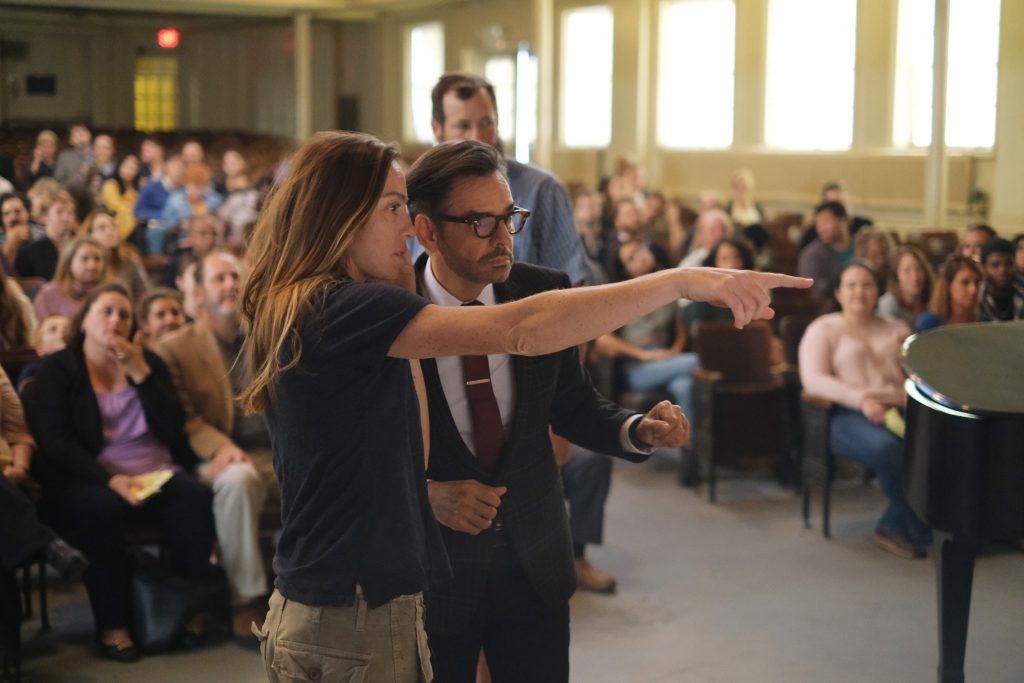On this edition of EMExclusives, we are going to dive into a new unique film coming to Apple TV+ & theatres this Friday called CODA. Seventeen-year-old Ruby is the sole hearing member of a deaf family – a CODA, child of deaf adults. Her life revolves around acting as interpreter for her parents and working on the family’s struggling fishing boat every day before school with her father and older brother. But when Ruby joins her high school’s choir club, she discovers a gift for singing and soon finds herself drawn to her duet partner Miles. Encouraged by her enthusiastic, tough-love choirmaster to apply to a prestigious music school, Ruby finds herself torn between the obligations she feels to her family and the pursuit of her own dreams.
I recently sat down via Zoom with the movie stars Emilia Jones, Marlee Matlin and Daniel Durant & director Siân Heder to talk about their involvement in this amazing film!

Starting things off is Emilia Jones who plays Ruby in the film. I asked her “How much preparation did you go into sign language and singing for the role of Ruby Rossi?”
I didn’t have any ASL experience prior to shooting. So, I found out that I got the part, I went straight into intense training and I learned sign language for nine months before we started shooting. I was filming a Netflix show at the time in Toronto, so I only had the weekends but I always learning in between takes. I had an amazing teacher, Anne Tomasetti, out in Toronto. He was so patient and he didn’t just teach me about ASL, he also taught me all about Deaf Culture.
When I got to Massachusetts, I worked closely with the ASL masters Anne Tomasetti and Alexandra Wailes and they really, really pushed me. I love a challenge, so I wanted to be pushed. And then Troy, Marlee and Daniel took me under their wings and helped me grow.
And singing too. I was in a choir at school. I was kind of always humming around the house. I did a musical at the West End when I was about eight years old. So, I’ve always sung but I have never done everything of this scale that was required for CODA. So, it was little bit daunting but again I had singing lessons for about eight to nine months. I just loved the challenge, I loved learning. Its not everyday that you learned three skills. I guess that I have learned how to fish, too. Its not everyday that you are given that opportunity. So, I felt very very grateful.
Next up is Oscar-winner Marlee Matlin who plays the matriarch Jackie Rossi and I asked her “I read that you mentioned that CODA is the perfect bookend from your debut “Children of a Lesser God” thirty-five years ago and I could not agree more. In your humble opinion, what strides are needed to continue to be made in terms of representation of the deaf community on screen whether its through film, television or streaming media?”
Great question. Someone just asked me recently about Children of a Lesser God saying that the film is “inappropriate because it was a representation of a deaf character through the voice of a hearing character” and I say “You know what Children of a Lesser God was a product of its time We’re now looking at film and television and streaming media in a completely different way and the stories are being told in a different way. I wouldn’t touch COALG from the current lens or the contemporary perspective.
As far as what needs to be done in terms of representation, we need to make sure that hearing actors don’t play deaf actors as if they are a costume they could put on and take off at the end of the day. I think we are done with that. We get that and I see everyone in here agrees.
Secondly, to make sure that the stories that you are telling are authentic as possible. I know that stories in whatever media it is can be approached in different ways but as long as they are the best way, they can be told using deaf actors in a role or actors with a disability for example and when there is a deaf actor for example on a set, make sure that the set is 100% accessible whether we are talking about interpreters. Whatever it is that creates the equal playing round for deaf actors. Each one of us has different needs but we all pretty have the same needs as far as in terms of communication access. So, its as simple as that.
I think that we need further representation on film and television and in streaming media, more deaf writers, more deaf costumers, designers whatever it maybe in front of or behind the cameras.

Next, I talked to Daniel Durant who plays Ruby’s older brother Leo and asked him, you attended Gallaudet University here in Washington DC. What led you to become an actor and what is a dream role that you love to play someday?
I really didn’t the intention of becoming an actor. I did love being an actor ever since I was nine. I got with a deaf and hard of hearing teacher at my school and they actually wrote a play for me. They directed and put me in it. I loved it at nine and I wanted to do more but I didn’t think much of this is my career or a job or anything like that. It was not until much much later when I was in high school probably my senior year when I started thinking maybe I should do acting. When I got to college, I was thinking about going into IT working on computers but then I realized that its more of a hobby. I mean I love technology. Then I decided “No, I am going to put some stuff on YouTube.” So, I did some ASL stories, ASL jokes. You know that’s the deaf communication when it comes to sharing stuff online. I put up some vlogs but that’s when I started growing a fanbase on YouTube.
One manager, who was based out of L.A., saw me on YouTube got in touch with me and ever since – here I am. As far as the dream role for the future, honestly, I don’t know. I just want to do more. I am open to anything right now. I hope that after you see me in CODA, even though I am a deaf actor, I want you to look at me as JUST an actor.

To wrap it all up, I talked to the writer/director Heder and asked her “Sian, this was a brilliant film and I feel that it has taught two languages, definitely American Sign Language and the language of music. I loved the fact that Eugenio’s character reminds me a lot of my chorus and drama teacher. How did you incorporate the different facets of music and how did you select the right songs that fit the narrative of CODA?”
Well the music of course it’s a challenge when you’re making an indie movie because it’s so expensive. So, you have these dreams of the songs that you like to have in your movie and there’s also always a certain amount of heartbreak when you know that “What do you mean that I can’t have that Stevie Wonder song?” You know, I actually wrote a letter to Stevie Wonder and I asked “Please Mr. Wonder can I have your song (laughs).” So, I was very lucky that Marvin Gaye’s song was the song that I have written into the script. And it was so lyrically perfect for these moments.
This song reoccurs five times in the movie. It has to play in all of these narrative ways and emotional points in the film. I loved that song and we ended up with my music supervisor, Alexandra Patsavas, made a deal with Sony to get this package of music. I can remember getting these lists of songs that were available. I had scanned through the lists and I saw that Marvin Gaye song was among them and I screamed and cheered because I was so happy that I was able to get it.
And the other really important song of the movie is “Both Sides Now”. I loved that song because Joni Mitchell has talked about it marking the end of her childhood and she described it at a time where “childhood fantasy brought up against adult reality” and I think it’s a song about perspective and changing perspective. When I worked with Alexandria Wailes on the signed version of this song, it was this incredible lyrical dance with this relationship between music and the signing.
I felt very lucky that those two key songs were so important in the film. Nicholas Baxter and Marius De Vries were my music team and we hired a real choir from Berkeley called Pitch Slap and they were our choir kids. Of course, then I was like “You are too good that you don’t sound like that you are from Glassdoor High School so I got to go cast some actors who can’t really sing very well to mix in with you.” It was really fun to find the choir songs that felt like a reflection on Eugenio’s character and what fun he would have to bring to a high school choir and finding the arrangements to those songs. We recorded all the music live on set. So, we were capturing all the flaws as it happens in the moment which was very exciting.
I also love the relationship of sound in the movie between the music in the choir scenes and the very silent signed scenes. I think that playing silence versus music and when the sound plays an important part in the film and when the sound doesn’t appear on the film and taking the audience on that ride was an exciting thing. To be honest, ASL and music in the same film sounds like a contradiction but to me there are so many connections. ASL is a very musical language. It feels melodic, rhythmic and much more expressive than spoken English. There were choices made in the film. When Ruby was asked how she feels about music, she chooses to sign her feelings about music because I think in that moment the emotion of how she feels is best expressed in sign language in a way that a song is more emotive than speaking. I found those connections to be really exciting even within the title. CODA is Child of Deaf Adults but it’s also the ending to a piece of music and that marriage felt very important in this film.
CODA premieres in theaters and on Apple TV+ on Friday, August 13th